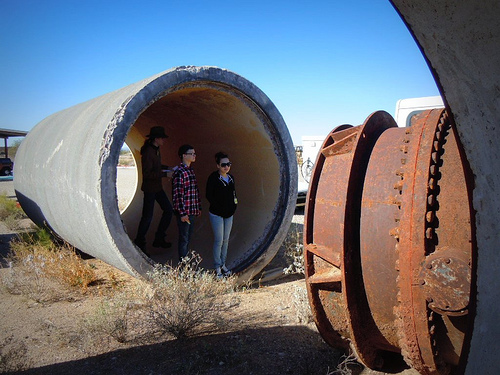 |
 |
|
 |
||
 |
||
|
"[In traditional education]…the school environment of desks, blackboards, a small school yard was supposed to suffice…There was no demand that the teacher should become intimately acquainted with the conditions of the local community, physical, historical, economic, occupational etc. in order to utilize them as educational resources." - John Dewey, Experience and Education, 1938 |
||
|
Learning Outside of the Classroom A pre-service teacher once asked me, “How can you go outside when you have to stay inside and do the curriculum?” His frustration reflects a commonly-held view that learning outside the classroom is “extra” and an “add-on.” Yet well-crafted field experiences engage students directly at the source of all the essential questions humans ask. They can explore properties of water, interdependence of living things, human justice, sources of poetry… all of the conundrums our places present.
“oh I get it ….the field trip IS the lesson!”
Learning outside of the classroom is much more than “just” a field trip. It is an intentional engagement with places that involves a high level of planning and structured learning. Learning in the field poses challenges and opportunities that are markedly different than considerations a teacher faces in the classroom.
In general, you want students to interrogate the site as rigorously as possible. Consider what you can structure so they are actively engaged, not “just looking.” Find ways to do actual things on site. Give your students time to explore, observe, think…and have fun! Time to play in a park, eat a meal in a restaurant, hang out in a coffee house and listen to music can all contribute to students getting a better understanding of a place. In order to truly learn from places educators need to take the time to learn before/at/and after you return from your site.
"The deeper you can go outside the school walls…the deeper learning happens.”
Teachers are justified if they feel getting kids outside is a lot to manage. Time and resources are tight. But teachers who find ways to move learning outside the school walls won’t go back. They claim it feeds them in ways they cannot replicate in the classroom. A California teacher, watching her students at work in the school garden, commented: “My kids smile when they learn out here. Why aren’t we doing more things that make our students smile?”
|
||
 |
||
|
|
|
|

